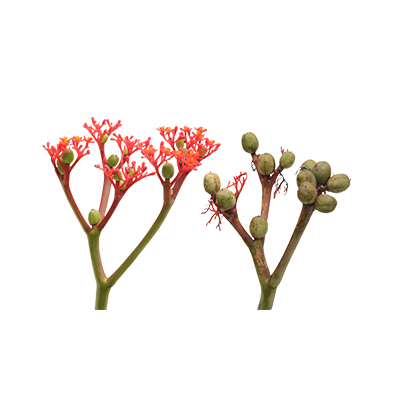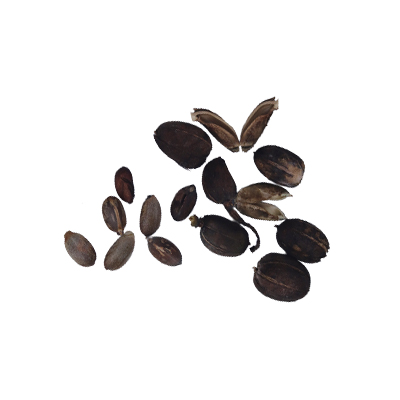Buddha Belly Plant
Jatropha podagrica Hook.
Euphorbiaceae
Location in our garden
Principal
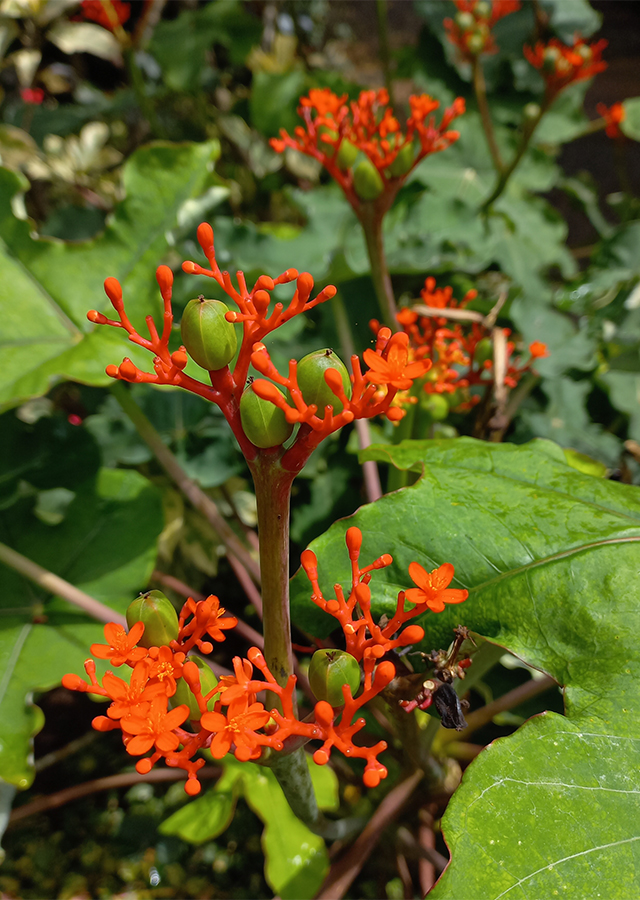
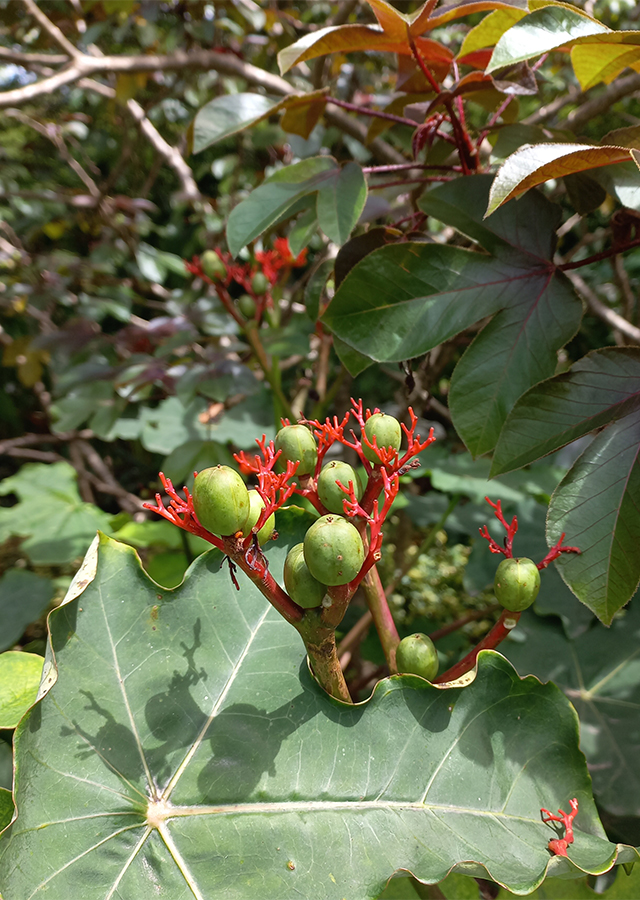
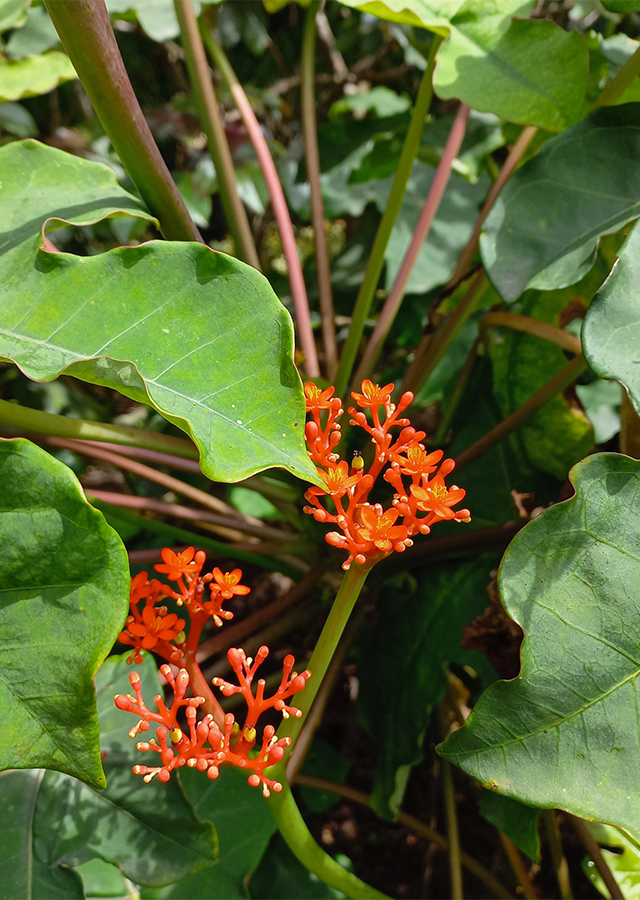
Synonym
-
Habitus
Shrubs. A tropical, succulent or sub-woody shrub, growing to a height of 0.5 to 1 m tall
Part Used
Seeds
Flowers
Fruit
Roots
Growing Requirements
Full Sunshine
Need Shade
Habitat
Riverbanks
Forest
Roadside
Grassland
Terrestrial
Overview
Jatropha podagrica is native to the tropical Americas but is grown as an ornamental plant in many parts of the world due to its unusual appearance. Jatropha podagrica derives from the Greek 'iatros' meaning healer and trophe, food. Podagrica derives from podagra meaning 'foot gout' especially of the big toe, or podagrikos, liable to gout. Buddha bellly name alludes to its thick and swollen trunk.
Vernacular Names
Fo du shu (Chinese), Pignon d inde (French), Jarak buncit (Malay), Da bin shwe-htee (Myanmar), Lapalapa funfun (Nigerian), Tinaja (Spanish), Dau lai la sen (Vietnamese).
Agroecology
Grows in an optimal environment, with an altitude of 0 -1000 m above sea level, temperatures ranging from 18 - 30 °C, rainfall 300 - 1.200 mm/year, good drainage, not flooded, and soil pH 5.0 - 6.5. Thrives in areas with full sun and partial shade. Prefer less water conditions.
Morphology
- Stems - swollen, knobby, gray-skinned, with a large bottle-like caudex.
- Leaves - peltate, glossy green adaxially, gray-green abaxially, margins entire, wavy, or shallowly 3- to 5-lobed, 6 to 8 palmate veins, up to 12 inches in diameter, with a stout stalk attached on the underside of the leaf.
- Flowers - small, bright red or orange-red, and coral-like clusters at the tip of a long red stalk.
- Fruits - capsules, ellipsoidal, about 1.5 cm, with 3 longitudinal grooves, initially green and fleshy, maturing to dark brown and explosively dehiscent to yield 2 to 3 black seeds.
- Seeds - smooth and glossy brown, about 1.5 to 2 cm long.
Cultivation
Propagated by seeds, stem cuttings and provision of seeds using tissue culture techniques.
Chemical Constituents
Alkaloids, tannins, flavonoids, saponins, phenol alkaloids, coumarins, steroids, phenols, phenolic acids, glycoflavones, proanthocyanidins, japodic acid, erythrinasinate, fraxidine, triterpenes, fraxidine, fraxetin, scoparone, 3-acetylaleuritolic acid, sitosterol and sitosterol or oleum ricini majoris, toxalbumin (cursin).
Traditional Medicinal Uses
- Roots considered antibacterial, antifungal, aphrodisiac.
- The Subanens in Dumingag, Zamboanga del Sur, who call it ginseng, apply crushed roots to wounds.
- In China, plant used for pain relief, reduction of swelling, and detoxifying snake bites.
- Seeds have been used as purgative, anthelmintic, and abortifacient; also for the treatment of gout, paralysis, and skin diseases.
- Seed oil used as ingredient in treatment of rheumatic conditions, pruritus, and parasitic skin diseases.
- Leaves have been used as hemostatic agent.
- In Africa, some chew seeds when in need of a laxative.
- In Myanmar, used for toothache, menstrual disorders, glossitis, postpartum disorders. Decoction of fruit, leaf, and flower used as mouthwash for dental and oral diseases. Resin used for healing various ulcers.
Part Used
Reference Sources
- StuartXchange. Philippines Medicinal Plant. (2017). Jatropha podagrica. http://www.stuartxchange.org/BuddhaBellyPlant. 27-10-21
- Cabi. Jatropha podagrica. https://www.cabi.org/isc/datasheet/28403. 27-10-21



